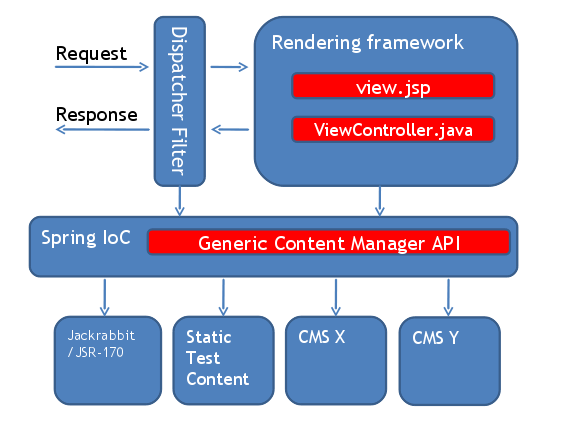Content Front is a framework for rendering content from one or more Content Management System as HTML the correct way.
The main principle behind this framework is that each content type knows how to render itself in each perspective. For large sites with many content types appearing many places this is imperative for maintainability. The oposite is that each content element knows how to render all its children. This can be appropriate for small, isolated cases, but fails as soon as the number of combinations of content types and perspectives increase.
Content Front is not an another web application framework like Struts, Stripes, Spring MVC or Wicket - in fact, it will work well in combination with these frameworks. Apache Tiles is the framework that resembles Content Front the most - the difference is that Tiles doesn't have the concept of "Content". An earlier version of this framework used Apache Tiles as basis.
Content Front currently implements a connector to a Jackrabbit repository, and a static test repository using Spring XML files as "content". Implementing support for other repositories is relatively simple.

To render a content type, a view definition must exist. The view is defined using a custom Spring namespace:
The "jsp" attribute defines the view, the "class" attribute defines the controller, and the content using the template defines the model in this MVC implementation. Since the controller is a Spring managed bean, you can do all the fun stuff Spring allows you to.
To render the content, simply use the "render" tag from a JSP, with the content ID as parameter.
This renders the content using the default template defined for this content type. Take a look at the other sections for many more rendering features here !